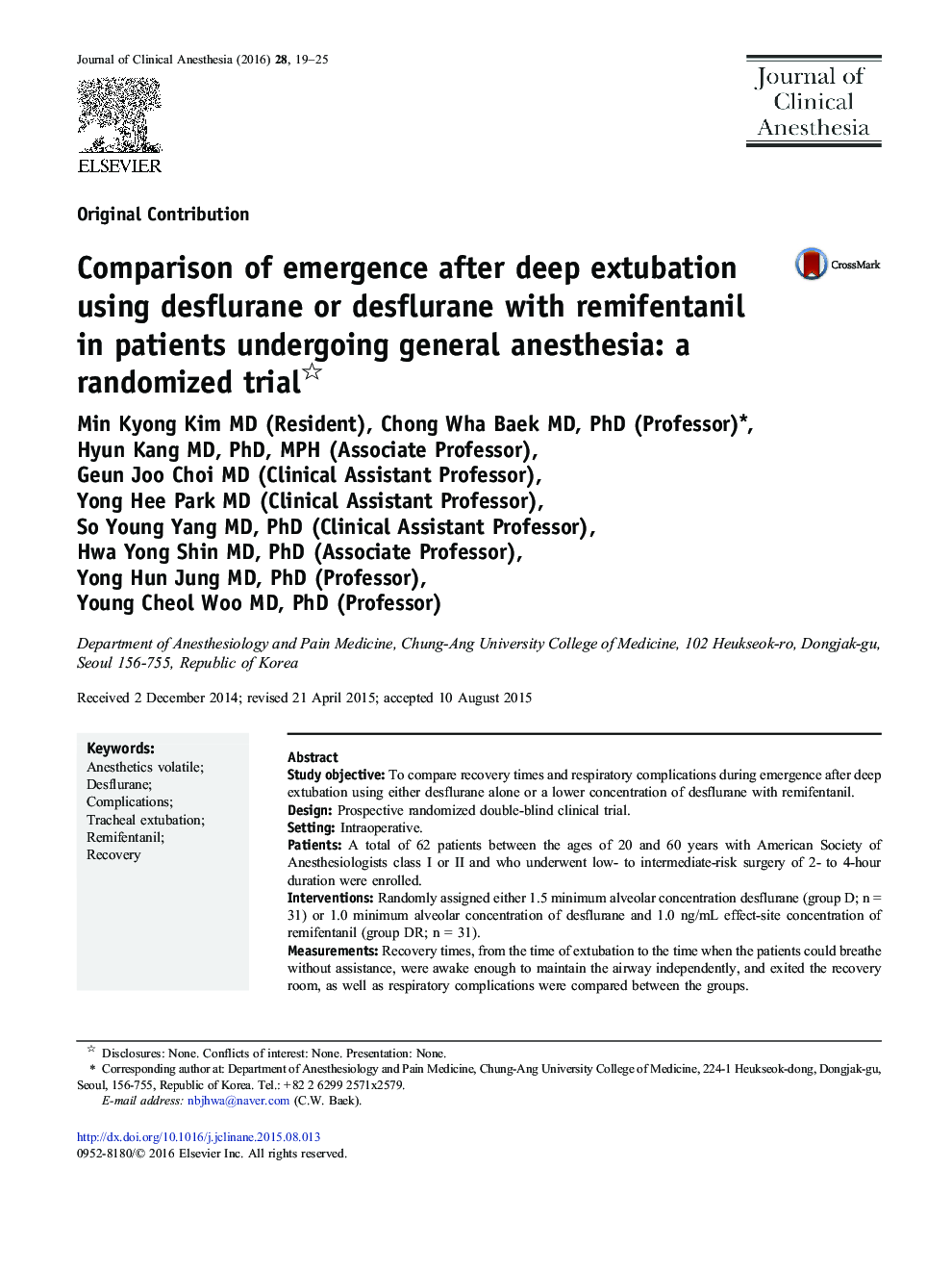| Article ID | Journal | Published Year | Pages | File Type |
|---|---|---|---|---|
| 2762349 | Journal of Clinical Anesthesia | 2016 | 7 Pages |
•Extubation under deep anesthesia; deep extubation can minimize many emergence phenomena but increases the risk of delayed recovery and respiratory complications.•Remifentanil is known to reduce coughing, nonpurposeful movement and tachycardia, when continuously used in low dosage during the emergence phase.•Remifentanil can also reduce the concentration of volatile anesthetics required for stable extubation.•The technique using 1 minimum alveolar concentration of desflurane with 1 ng/mL target-controlled infusion of remifentanil during deep extubation significantly reduces recovery time and respiratory complications.
Study objectiveTo compare recovery times and respiratory complications during emergence after deep extubation using either desflurane alone or a lower concentration of desflurane with remifentanil.DesignProspective randomized double-blind clinical trial.SettingIntraoperative.PatientsA total of 62 patients between the ages of 20 and 60 years with American Society of Anesthesiologists class I or II and who underwent low- to intermediate-risk surgery of 2- to 4-hour duration were enrolled.InterventionsRandomly assigned either 1.5 minimum alveolar concentration desflurane (group D; n = 31) or 1.0 minimum alveolar concentration of desflurane and 1.0 ng/mL effect-site concentration of remifentanil (group DR; n = 31).MeasurementsRecovery times, from the time of extubation to the time when the patients could breathe without assistance, were awake enough to maintain the airway independently, and exited the recovery room, as well as respiratory complications were compared between the groups.Main ResultsRecovery times were significantly reduced in the group DR (P < .001). The incidence of respiratory complications was also lower in group DR than in group D (48% vs 3.8%; P < .001).ConclusionsThe combined use of remifentanil while lowering the concentration of desflurane improves recovery profiles during emergence after deep extubation.
